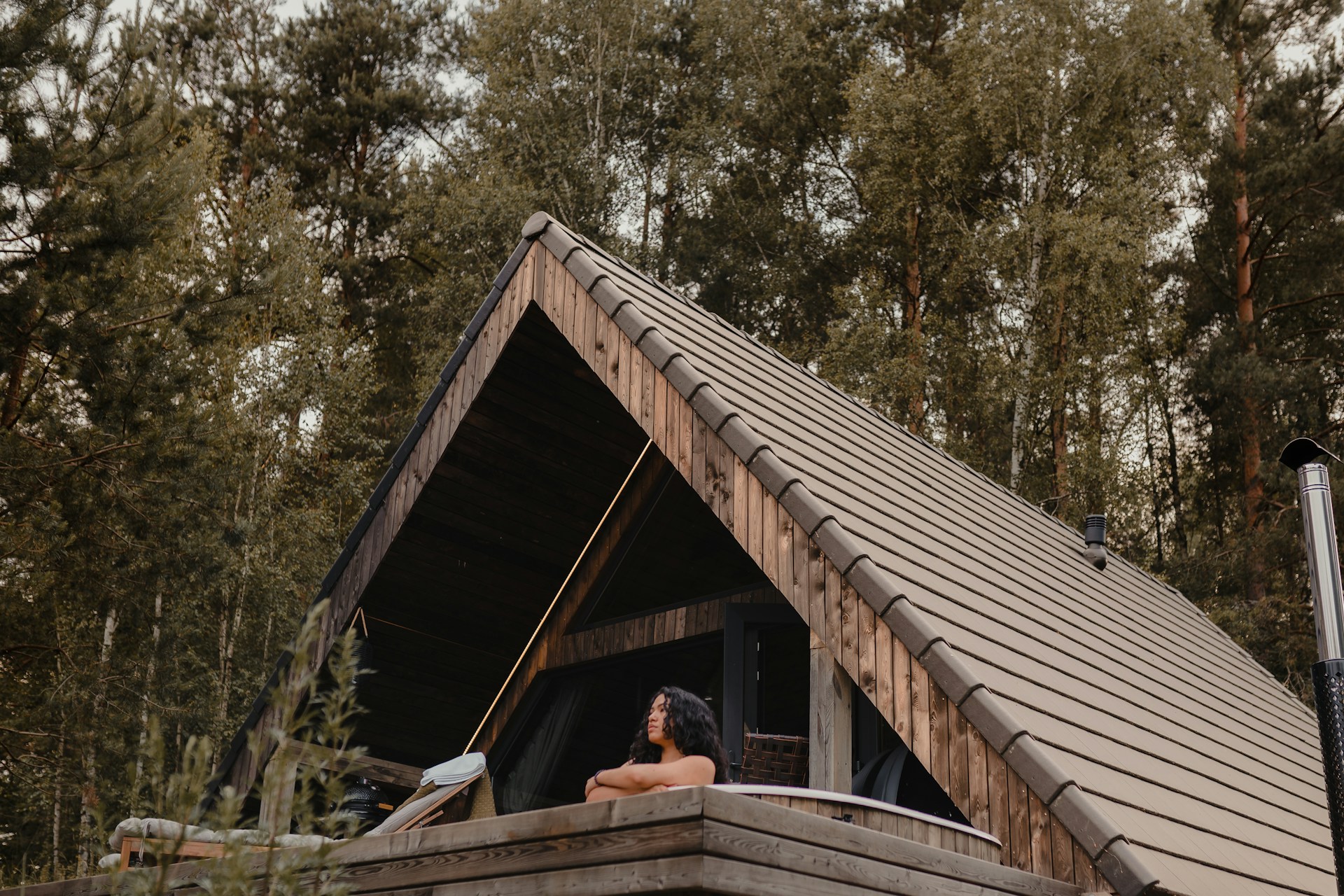Preparedness
Beat Cabin Fever with These Seven Simple Strategies

Isolation isn’t a natural state for most of us. As inherently social beings, we thrive on interaction and community. This is why extended periods of staying at home can be challenging, regardless of the reason behind the isolation.
The term “Cabin Fever” describes a common reaction to being confined indoors for a period, often due to circumstances like quarantine or adverse weather. The symptoms extend beyond mere boredom and are deeply rooted in feelings of isolation, which can manifest as distrust of those around you.
The impact of cabin fever varies from person to person. While some find solace in projects or creative outlets, others struggle with the day-to-day until the feelings subside. Here are seven strategies to help cope with cabin fever:
Firstly, connecting with nature can significantly uplift your mood. Fresh air and sunshine are crucial for mental health. If you’re unable to go outside, try to bring nature indoors.
“Open your windows – whenever possible allow the fresh air indoors.” This not only introduces fresh air but also helps release built-up toxins from manmade items in your home.
House plants can also be beneficial, as studies suggest that “having living green plants in an environment helps to reduce stress.” If greenery isn’t an option, watching nature shows or travelogues that feature expansive outdoor scenes can be a good alternative.
Exercise, whether indoors or out, is another effective strategy. Physical activity, such as dancing or following an online workout, can alleviate restlessness and boost your mood by getting your heart pumping and blood flowing.
A structured daily routine can also help combat the disruptions in eating, sleeping, and activity patterns often caused by isolation. Establishing a schedule that includes work, meals, exercise, and downtime can provide a sense of normalcy and purpose.
Staying connected with loved ones is vital. In today’s world, there are numerous ways to maintain contact, such as phone calls, video chats, and emails. However, “sometimes a good old-fashioned hand written letter can do you, and the recipient a world of good.” It shows care and offers a personal touch that digital communication often lacks.
Maintaining normal eating patterns is equally important. While it might be tempting to indulge in junk food or skip meals, a balanced diet can enhance energy levels and motivation. Monitor your eating habits to ensure proper nutrition, and remember to stay hydrated.
Engaging your mind with activities like crossword puzzles, reading, or board games can keep feelings of isolation and helplessness at bay. While TV can be a distraction, it often lacks the mental stimulation needed to move forward positively.
Lastly, if you share your space with others, it’s crucial to carve out some personal time. Whether it’s reading, meditating, or listening to a podcast, having moments to yourself can help manage the intensity of cabin fever.
If you find that your symptoms are worsening and coping mechanisms seem ineffective, consider reaching out to a mental health professional. They can help you understand your experiences and work with you to find ways to overcome these feelings and any underlying anxiety.
Let us know what you think, please share your thoughts in the comments below.

Preparedness
5 Everyday Items in Your Home That Can Help You Protect Yourself

Most people don’t keep traditional self-defense tools around the house, but that doesn’t mean you’re helpless in an emergency. The truth is, you already own simple items that can give you precious seconds to get away, call 911, or draw attention. The key is knowing what works, what’s legal, and how to use these items only to defend yourself when you have no other choice.
Here are five practical household items that can help you stay safe during a threatening situation:
1. A Heavy-Duty Flashlight
A solid, metal flashlight is one of the best non-lethal tools you can keep within reach.
It serves two purposes:
• The bright beam can disorient someone long enough for you to escape.
• The sturdy body gives you something to hold if you need to keep distance between yourself and a threat.
Keep one by your bed and another near your front door.
2. A Loud Personal Alarm or Air Horn
Sometimes the strongest defense is noise. A personal alarm or small air horn can draw attention fast and frighten off an intruder. These devices are inexpensive, easy to use, and require no physical strength. They also alert neighbors that something is wrong, which can shorten response time dramatically.
3. A Strong Walking Cane
For older adults especially, a cane can be surprisingly effective for self-defense if absolutely needed. Its length helps you create distance, and its solid structure gives you a way to push someone back without having to get close. Even if you don’t use a cane daily, keeping one near your bedroom can be smart.
4. A Fire Extinguisher
Beyond its intended use, a fire extinguisher can help you defend yourself in two ways:
• The blast of spray can temporarily block vision and breathing, allowing you to escape.
• Its weight gives you something sturdy to hold while you retreat.
Plus, it’s already a safety essential for your home.
5. A Kitchen Pan or Lid
If you’re caught in the kitchen, a heavy pan or even a metal pot lid can create an effective barrier. A lid works like a small shield, helping you protect your face and upper body as you move away. A pan gives you something solid to hold between you and a threat.
A Final Note on Safety
Self-defense is always about getting away safely, not engaging in a fight. Your first options should always be:
• Avoid the situation
• Lock or barricade a door
• Call for help
• Get to safety
Use objects only as a last resort and only to give yourself time to escape.
Preparedness
5 Things You Should Always Carry During a Winter Storm

When a winter storm rolls in, life can shift fast. Roads freeze, power lines drop, and long errands suddenly become real risks. The good news is that a little preparation goes a long way, especially if you keep a few essential items within reach. These aren’t expensive or complicated. They’re simple, practical tools that can make all the difference when temperatures drop and help arrives slowly.
Below are five things worth carrying with you any time severe winter weather is in the forecast. Think of them as your personal insurance plan — small items that bring peace of mind in uncertain conditions.
1. A Fully Charged Portable Power Bank
If you’re stranded or delayed, your phone becomes your lifeline. It lets you call for help, follow weather alerts, and use GPS if you need to find your way. In cold weather, phone batteries drain much faster, so a reliable power bank is a must. Choose one that can charge your phone at least twice. Keep it in an inside pocket so cold temperatures don’t sap its power.
2. An Emergency Blanket
These lightweight, reflective blankets take up almost no space, but they retain an incredible amount of body heat. If your car breaks down or you get stuck outdoors, an emergency blanket helps you stay warm enough until help arrives. For older adults especially, preventing a rapid drop in body temperature is critical. Toss one in your glove box or day bag — you won’t notice it until you really need it.
3. High-Energy Snacks
In extreme cold, your body burns calories faster to stay warm. Carrying a small stash of calorie-dense snacks gives you steady energy and helps maintain body temperature. Look for items that won’t freeze rock-solid, such as nut butters, protein bars, granola, or trail mix. If you take medication that requires food, this becomes even more important.
4. A Compact LED Flashlight
Winter storms often come with poor visibility. Whether you’re navigating an icy path, checking under the hood, or signaling for help, a bright flashlight is worth its weight in gold. Choose an LED model with long battery life, and avoid relying solely on your phone’s flashlight. You may need that battery for communication.
5. A Small First-Aid Pouch
Accidents are more common when surfaces are slick. A small kit with bandages, antiseptic wipes, medical tape, hand warmers, and any personal medications can stabilize minor injuries until you can get proper care. Add a pair of disposable gloves to protect your hands in freezing weather.
Preparing for winter doesn’t mean living in fear. It simply means respecting the season and giving yourself the tools to stay safe, warm, and steady. With these five essentials on hand, you’ll be better equipped to handle whatever a winter storm throws your way — and you’ll travel with much more confidence as the temperatures fall.
Preparedness
The Top Survival Foods That Last for Years (and Actually Taste Good)

When emergencies strike, whether it’s a power outage, a storm, or a supply shortage the food you have on hand can make all the difference. Building a practical, long-lasting food stockpile doesn’t mean settling for bland meals or astronaut rations. With a bit of planning, you can create a pantry that’s nutritious, comforting, and ready for anything.
1. Rice: The Reliable Staple
Rice is a survival classic for a reason. It’s inexpensive, lightweight, and can last over 20 years if stored properly in airtight containers with oxygen absorbers. Pair it with beans, canned vegetables, or spices to make complete meals. Brown rice offers more nutrition but has a shorter shelf life about six months, so white rice is the go-to for long-term storage.
2. Beans: Protein That Never Quits
Dried or canned, beans are a powerhouse of protein, fiber, and minerals. They fill you up fast and combine perfectly with rice for a balanced diet. Dried beans keep for decades, while canned varieties are ready to eat in minutes just check expiration dates every year.
3. Peanut Butter: The Energy Saver
Packed with calories, healthy fats, and protein, peanut butter is a morale booster when fresh food is scarce. It requires no cooking, lasts up to two years unopened, and offers comfort in uncertain times. It’s especially useful for families with children.
4. Canned Meats and Fish
Tuna, chicken, salmon, and even Spam are excellent sources of protein and essential fats. Canned meats last several years and can be eaten cold if cooking isn’t an option. Rotate them every 18–24 months to maintain freshness and flavor.
5. Oats: Breakfast and Beyond
Oats are nutrient-dense, easy to prepare, and versatile, you can make oatmeal, granola, or even use them as a flour substitute. Stored in a sealed container, they’ll last for years and provide sustained energy.
6. Honey: Nature’s Forever Food
Honey never spoils. Archaeologists have found jars of honey thousands of years old that are still edible. It’s a natural sweetener, cough remedy, and wound treatment. Keep it sealed and store at room temperature if it crystallizes, just warm it gently.
7. Powdered Milk and Eggs
These are perfect for baking, cereal, or protein shakes when fresh dairy isn’t available. Properly stored in cool, dry places, powdered milk lasts up to 10 years, while powdered eggs can stay good for up to 5.
8. Salt and Seasonings
Salt isn’t just a flavor enhancer, it’s a preservative and electrolyte source. Pair it with spices and dried herbs to make otherwise dull survival meals much more enjoyable. Comfort food matters more than you think during stressful times.
9. Dried Fruits and Nuts
These provide quick energy, healthy fats, and essential vitamins. They’re ideal for snacking or adding to cereals and trail mixes. Store them in airtight containers to extend their shelf life up to a year or more.
10. Freeze-Dried Meals
Modern freeze-dried meals have come a long way, they’re lightweight, tasty, and can last 25 years or longer. Just add water and you’ve got instant lasagna, chili, or chicken teriyaki. They’re expensive, but worth including for convenience.
Final Thought
Survival food isn’t about hoarding, it’s about being smart. Build your stock gradually, rotating items so nothing goes to waste. Focus on variety, nutrition, and comfort foods that boost morale. The best survival pantry is one that you’d happily eat from even without an emergency.
-

 Tactical2 years ago
Tactical2 years ago70-Year-Old Fends Off Intruder with Lead-Powered Message
-

 Tactical2 years ago
Tactical2 years agoVape Shop Employee Confronts Armed Crooks, Sends Them Running
-

 Preparedness1 year ago
Preparedness1 year agoEx-Ballerina’s Guilty Verdict Sends Tremors Through Gun-Owner Community
-

 Off The Grid3 weeks ago
Off The Grid3 weeks ago10 Foods That Could Save Your Life When Grocery Shelves Are Empty
-

 Preparedness1 year ago
Preparedness1 year agoGood Samaritan Saves Trooper in Harrowing Interstate Confrontation
-

 Tactical2 years ago
Tactical2 years agoMidnight SUV Theft Interrupted by Armed Homeowner’s Retaliation
-

 Preparedness5 months ago
Preparedness5 months agoHow Much Gasoline Should You Store for Emergencies?
-

 Survival Stories2 years ago
Survival Stories2 years agoEmily’s 30-Day Experience of Being Stranded on a Desert Island